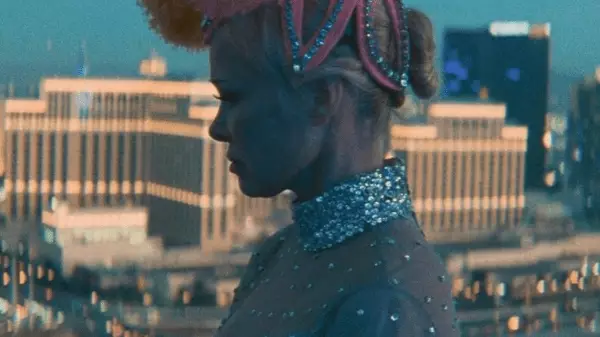Amidst a wave of nostalgia and renewed interest in vintage celebrity culture, Pamela Anderson is poised for a formidable return to the screen in Gia Coppola’s upcoming film, *The Last Showgirl*. The long-awaited onscreen comeback follows a significant period of public examination, underscored by her recent documentary, *Pamela, a Love Story*, streaming on Netflix. This resurgence signifies not just a bounce back for Anderson, but also a reinvention, as she steps into the shoes of Shelley, a character that embodies both struggle and resilience reminiscent of the iconic Marilyn Monroe.
Coppola’s inspiration from historical figures like Monroe adds a layer of richness to the portrayal of Shelley. The character is positioned against the backdrop of glitzy Las Vegas, embodying a narrative filled with both glamour and despair. As the film unfolds, Shelley finds herself at a pivotal moment in her life. Her 38-year tenure in the spotlight is abruptly halted, highlighting the stark reality of aging in the entertainment industry—a theme Coppola deftly explores. The idea that Anderson is “the Marilyn of our time” posits an intriguing connection between two eras of femininity where beauty and vulnerability are intertwined.
Redefining Identity and Creativity
Anderson’s perspective on her character indicates a reflective journey, one that traverses her own life experiences. She articulates a profound connection to Shelley, suggesting a mutual struggle with external perceptions versus internal realities. Anderson’s claims that the role was “meant for me” suggest an intimate understanding, resonating with anyone who has ever felt the weight of public scrutiny. The film thus serves not only as entertainment but also as a metaphorical exploration of self-identity and maternal bonds, particularly relevant in today’s context where personal narratives often clash with public personas.
Coppola’s observations about Anderson’s desire to express herself creatively reinforce the film’s thematic focus. Both women have navigated their careers through a lens that often prioritized image over substance. In a striking revelation, Anderson mentions that much of her career has been concentrated on superficial qualities dictated by the industry. This alignment between the character’s circumstances and Anderson’s life serves to amplify a powerful message: the need for authentic representation. The film speaks to a longing for depth, advocating against the monolithic portrayal of women in Hollywood by showcasing their desires, struggles, and aspirations.
The Impact of Storytelling
As *The Last Showgirl* premieres on December 13th, viewers are invited to witness not just a story about a dancer in Las Vegas but also the unfolding of a narrative that challenges conventional tropes about aging and femininity. Anderson’s portrayal, anchored in real-life parallels, sets the stage for a discussion about the narratives we celebrate in public life. This film stands to redefine how stories of women like Anderson and Monroe can transcend ephemeral beauty, urging audiences to appreciate the artistry in their struggles and triumphs. In the end, Anderson’s comeback serves as a reminder of the complexity of identity, and the creative power held within one’s journey.


Leave a Reply